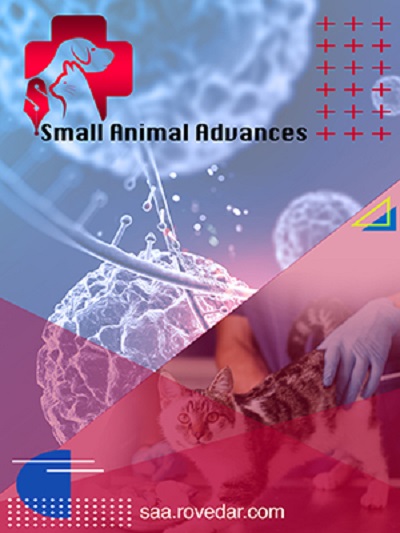Interrogating the Milk Yield Genome: A Comparative Whole Genome Association Study in Guanzhong and Beetal Goats
Main Article Content
Abstract
Introduction: Goat milk production is a vital economic trait, driven by rising global demand due to its digestibility, nutritional benefits, and hypoallergenic properties. To explore the genetic basis of milk yield, a genome-wide association study (GWAS) was conducted using whole-genome sequencing (WGS) data from two dairy goat breeds, Guanzhong (China) and Beetal (Pakistan). The present study aimed to identify genomic variants linked to milk yield in Guanzhong (China) and Beetal (Pakistan) goat breeds by performing an in silico GWAS using available WGS data.
Materials and methods: Raw sequencing reads from both breeds were retrieved from public repositories and processed through an established bioinformatics pipeline. A GWAS was performed using a linear mixed model with GCTA and GEMMA, accounting for population structure and polygenic background. After quality control and alignment to the ARS1 goat reference genome using BWA, single-nucleotide polymorphisms (SNPs) were identified, and variants were filtered using SAMtools/BCFtools by applying thresholds of minor allele frequency (> 5%) and genotype call rate (> 90%). Population structure was assessed through principal component analysis and a genomic kinship matrix, both conducted using GCTA software, to control for stratification. The Manhattan plot revealed several genome-wide significant peaks, including loci near LALBA, PRLR, and SPP1, which are associated with lactation traits in dairy goats.
Results: The GWAS revealed significant SNPs near LALBA on chromosome 19 (p = 1 × 10-¹⁰) and PRLR on chromosome X (p = 3.2 × 10-⁹) strongly associated with milk yield in Guanzhong and Beetal goats. In Guanzhong goats, SNPs near ANPEP, ADRA1A, and PRKG1 exhibited significant allele frequency differences, while in Beetal goats, SNPs near IGFBP3 and LEPR were linked to lactation traits. These loci provided robust genomic markers for enhancing the dairy goat breeding program.
Conclusion: The present study demonstrated the feasibility of WGS-based GWAS in goats and identified candidate loci such as SPP1, ERBB4, and LALBA, previously linked to lactation, that may serve as genomic markers in future selection programs.
Article Details

This work is licensed under a Creative Commons Attribution 4.0 International License.
References
Ni J, Xian M, Ren Y, Yang L, Li Y, Guo S, et al. Whole-genome resequencing reveals candidate genes associated with milk production trait in Guanzhong dairy goats. Anim Genet. 2024; 55(1): 168-172. DOI: 10.1111/age.13380
Zhao J, Mu Y, Gong P, Liu B, Zhang F, Zhu L, et al. Whole-genome resequencing of native and imported dairy goat identifies genes associated with productivity and immunity. Front Vet Sci. 2024; 11: 1409282. DOI: 10.3389/fvets.2024.1409282
Zhang K, Zhao J, Mi S, Liu J, Luo J, and Liu J. Whole-genome variants resource of 298 Saanen dairy goats. Sci Data. 2025; 12(1): 528. DOI: 10.1038/s41597-025-04880-6
Amiri Ghanatsaman Z, Ayatolahi Mehrgardi A, Asadollahpour Nanaei H, and Esmailizadeh A. Comparative genomic analysis uncovers candidate genes related with milk production and adaptive traits in goat breeds. Sci Rep. 2023; 13(1): 8722. DOI: 10.1038/s41598-023-35973-0
Xiong J, Bao J, Hu W, Shang M, and Zhang L. Whole-genome resequencing reveals genetic diversity and selection characteristics of dairy goat. Front Genet. 2023; 13: 1044017. DOI: 10.3389/fgene.2022.1044017
Massender E, Oliveira HR, Brito LF, Maignel L, Jafarikia M, Baes CF, et al. Genome-wide association study for milk production and conformation traits in Canadian Alpine and Saanen dairy goats. J Dairy Sci. 2023; 106(2): 1168-1189. DOI: 10.3168/jds.2022-22223
Qu Y, Chen L, Ren X, Shari A, Yuan Y, Yu M, et al. Milk proteomic analysis reveals differentially expressed proteins in high-yielding and low-yielding Guanzhong dairy goats at peak lactation. J Dairy Res. 2024; 91(1): 31-37. DOI: 10.1017/S0022029924000013
Chessari G, Criscione A, Marletta D, Crepaldi P, Portolano B, Manunza A, et al. Characterization of heterozygosity-rich regions in Italian and worldwide goat breeds. Sci Rep. 2024; 14(1): 3. DOI: 10.1038/s41598-023-49125-x
Feng F, Yang G, Ma X, Zhang J, Huang C, Ma X, et al. Comparative analysis of milk fat extracted from different goat breeds in China: Fatty acids, triacylglycerols and thermal and spectroscopic characterization. Foods. 2024; 13(12): 1913. DOI: 10.3390/foods13121913
Zhao Q, Huang C, Chen Q, Su Y, Zhang Y, Wang R, et al. Genomic inbreeding and runs of homozygosity analysis of cashmere goat. Animals. 2024; 14(8): 1246. DOI: 10.3390/ani14081246
Fan L, Shen J, Li X, Li H, Shao Y, Lu CD, et al. Analysis of temporal changes of microbiota diversity and environmental interactions in Saanen dairy goats. J Appl Anim Res. 2023; 51(1): 749-763. DOI: 10.1080/09712119.2023.2273945
Lázaro SF, Tonhati H, Oliveira HR, Silva AA, Scalez DCB, Nascimento AV, et al. Genetic parameters and genome-wide association studies for mozzarella and milk production traits, lactation length, and lactation persistency in Murrah buffaloes. J Dairy Sci. 2024; 107(2): 992-1021. DOI: 10.3168/jds.2023-23284
Cao Y, Feng T, Wu Y, Xu Y, Du L, Wang T, et al. The multi-kingdom microbiome of the goat gastrointestinal tract. Microbiome. 2023; 11(1): 219. DOI: 10.1186/s40168-023-01651-6
George L, Alex R, Sukhija N, Jaglan K, Vohra V, Kumar R, et al. Genetic improvement of economic traits in Murrah buffalo using significant SNPs from genome-wide association study. Trop Anim Health Prod. 2023; 55(3): 199. DOI: 10.1007/s11250-023-03606-3
Pawliński B, Gołębiewski M, Trela M, and Witkowska-Piłaszewicz O. Comparison of blood gas parameters, ions, and glucose concentration in Polish Holstein-Friesian dairy cows at different milk production levels. Sci Rep. 2023; 13(1): 1414. DOI: 10.1038/s41598-023-28644-7
Fouz R, Rodríguez-Bermúdez R, Rodríguez-Godina IJ, Rodríguez-Domínguez M, Rico M, Diéguez FJ. Evaluation of haptoglobin concentration in clinically healthy dairy cows: Correlation between serum and milk levels. J Appl Anim Res. 2024; 52(1): 2300624. DOI: 10.1080/09712119.2023.2300624
Cesarani A, Corte Pause F, Hidalgo J, Garcia A, Degano L, Vicario D, et al. Genetic background of semen parameters in Italian Simmental bulls. Ital J Anim Sci. 2023; 22(1): 76-83. DOI: 10.1080/1828051X.2022.2160665
Wang H, Xu W, Chen X, Mei X, Guo Z, and Zhang J. LncRNA LINC00205 stimulates osteoporosis and contributes to spinal fracture through the regulation of the miR-26b-5p/KMT2C axis. BMC Musculoskelet Disord. 2023; 24(1): 262. DOI: 10.1186/s12891-023-06136-z

